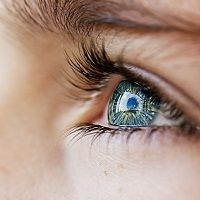Ziv-Aflibercept Comparable to Aflibercept, Ranibizumab
The ZEBRA study found that ziv-aflibercept was non-inferior to aflibercept and ranibizumab, and was more cost-effective.

Investigators at Eastern Virginia Medical School in Norfolk, Virginia, found that ziv-aflibercept is comparable to other anti-VEGF medications widely available in safety and efficacy in treating neovascular age-related macular degeneration (nAMD). In the ZEBRA study, they compared ziv-aflibercept to treatment with bevacizumab, ranibizumab, or aflibercept.
Ziv-aflibercept is the systemic analog to the intravitreal injection aflibercept. It is more widely available and relatively low-cost, making it a potentially attractive option for nAMD treatment.
Haley D'Souza, Eastern Virginia Medical School, Norfolk, Virginia, presented the research during a session at the 2019 Annual Meeting of the Association for Research in Vision and Ophthalmology (ARVO) in Vancouver, BC.
“Ziv-aflibercept was non-inferior to both aflibercept and ranibizumab with respect to anatomy, function, and complication rate,” said D'Souza.
In this prospective, case-controlled study, 52 patients with previous treatment for nAMD with intravitreal bevacizumab, ranibizumab, and/or aflibercept were randomized to intravitreal ziv-aflibercept or to continue their previous treatment. The treatment group received 1.25 mg/0.05 mL intravitreal ziv-aflibercept at their baseline treatment interval. Inclusion criteria required a best corrected visual acuity (BCVA) ≤ 20/250, and patients were excluded for active intraocular inflammation, recent vitreous hemorrhage, and uncontrolled glaucoma or ocular hypertension.
The study has 52 patients enrolled, with 26 of those for at least 9 months and 10 of those for at least 12 months. In those 26 participants, the mean baseline BCVA was 1.51 ± .37 logMAR for the control group (n = 12) and 1.72 ± .38 logMAR for the treatment group (n = 14). The mean change in BCVA was 0.17 logMAR for the control group and 0.07 logMAR for the treatment group (P = .45).
Mean baseline central foveal thickness (CFT) was 246 ± 62 µm and 240 ± 95 µm in the control and treatment arms and the mean change in CFT was 40 µm and 21 µm, respectively.
Over 12 months, ziv-aflibercept was well tolerated. There was no significant change in mean arterial blood pressure between the control and treatment groups (P = .35). Additionally, there was no renal toxicity and no adverse events, such as retinal detachment, intraocular inflammation, intraocular infection, or vision loss.
In addition to evaluating safety and efficacy, the investigators were interested in the potential cost savings of switching patients from aflibercept to ziv-aflibercept.
“What we wanted to do was look at the projected theoretical cost-effectiveness of switching to this drug from other therapies,” said D’Souza during her presentation.
She said that if patients with neovascular AMD who are receiving long-term therapy with aflibercept switched to ziv-aflibercept, the savings to the health care system would be $1.5 billion over a 2-year period.
“Ziv-aflibercept may eventually represent a cost-effective alternative to aflibercept and potentially be a second rescue therapy for eyes that become resistant to bevacizumab,” added D’Souza. She noted that further randomized controlled trials are needed to compare the treatments.
The abstract, “Ziv-aflibercept Efficacy in Better Regulating Neovascular AMD (ZEBRA) Trial,” was presented at ARVO on Thursday, May 2, 2019 in Vancouver, BC.